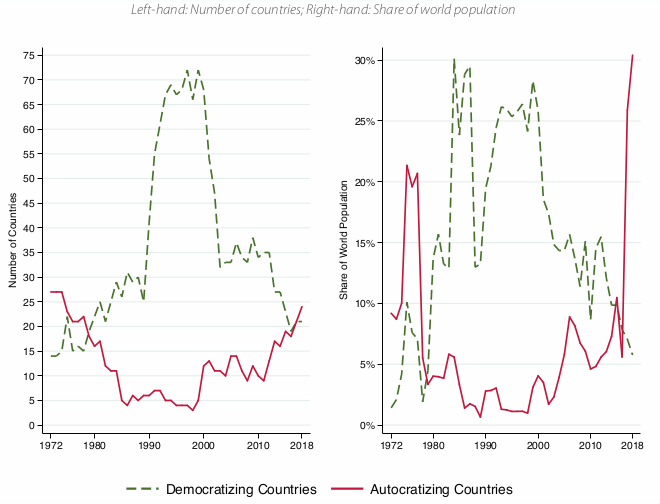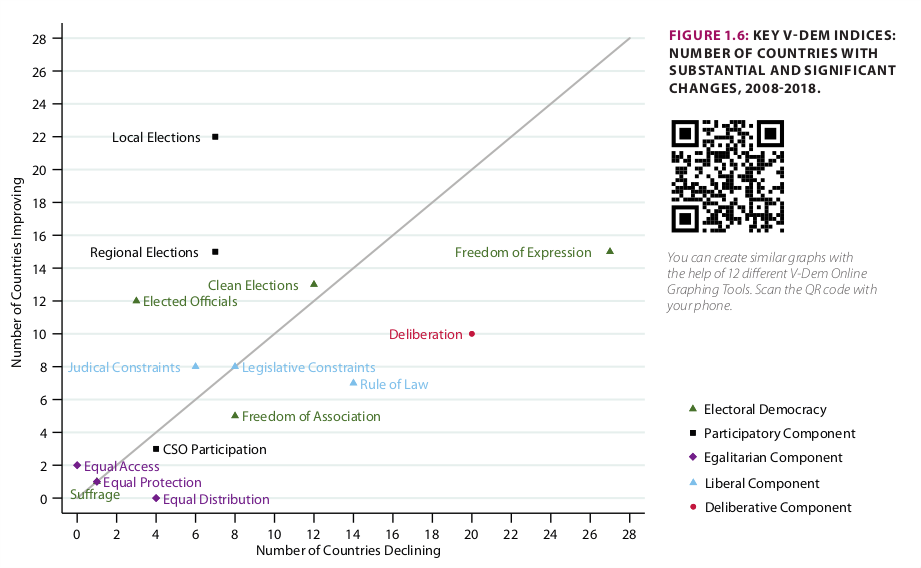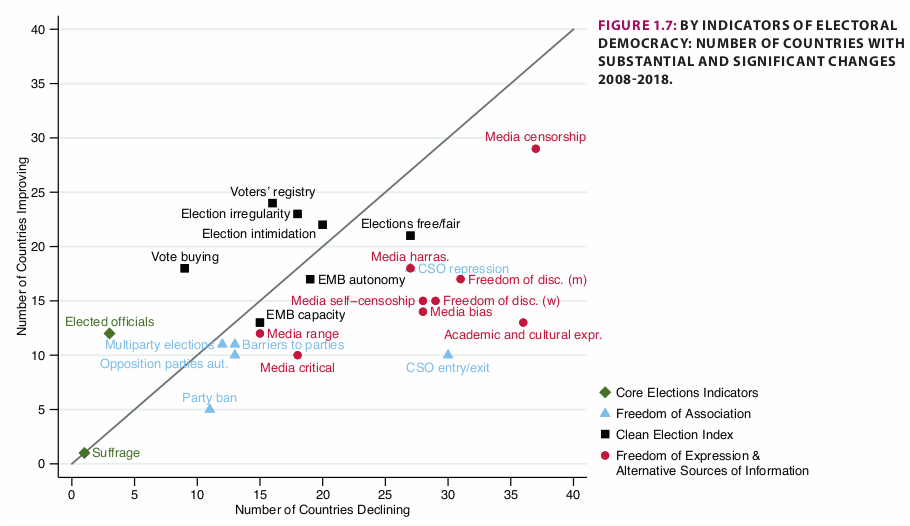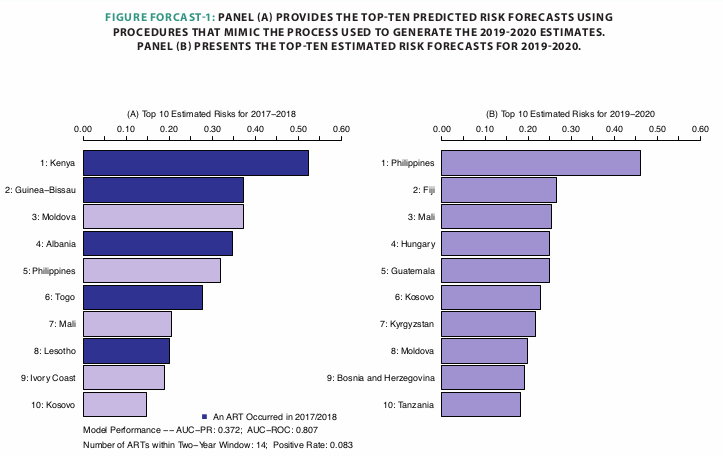Main Findings
- The trend of autocratization continues; 24 countries (including the very populous Brazil, India and the United States) are now severely affected by the “third wave of autocratization” (almost a third of the world’s population, i.e. 2.3 billion people, live in countries currently undergoing autocratization). In this paper (Lührmann and Lindberg 2019), two of the authors of the present study elaborate on the shape and origins of this “third wave”.
- 21 countries have made progress on democracy over the past ten years.
- Democracy still prevails in a majority of countries in the world (99 countries or 55% of the world’s population).
Main Challenges to Democracy
Government manipulation of media, civil society, rule of law, and elections
For the first time, the freedom and fairness of elections is declining in more countries than it is improving.
Toxic polarization is on the rise
Political leaders are increasingly using hate speech, and the political elites’ respect for opponents, factual reasoning, and engagement with society is declining in more countries than it is improving.
Digitalisation enables the spread of misinformation
New data suggests that a number of democracies are the target of foreign online disinformation campaigns. Also, most autocratic regimes (70%) use the internet to manipulate the information environment within their borders.
Definitions
Lührmann et al. 2019 define “autocratization” as follows:
Autocratization means any substantial and significant worsening on the scale of liberal democracy. It is a matter of degree and a phenomenon that can occur both in democracies and autocracies. Thus “autocratization” is an umbrella term that covers both erosion in democratic countries (democratic backsliding), breakdown of democracy, as well as worsening of conditions in electoral authoritarian countries. Semantically, it signals the opposite of democratization, describing any move away from [full] democracy (Lührmann et al. 2019, 14).
In the report, the authors operationalise the concept of autocratization (and its complementary concept democratization) as follows:
a substantial and significant change of the Liberal Democracy Index (LDI) over ten years. For each year, we take the difference of the score at time t and time t−10, thus capturing both rapid and gradual change. Changes are significant if the confidence intervals do not overlap, and we consider them substantial if the absolute value of the changes is larger than 0.05. (Lührmann et al. 2019, 14)
This operationalisation yields the following (quite upsetting) set of graphs:

Analysis
Analysing the data, the authors make an interesting observation. In the process of autocratization, free and fair multiparty elections are not in decline (at least at first). Rather, autocrats aim to impact the key characteristics of political systems that make elections meaningful in the first place: freedom of expression, rule of law, and to somewhat lesser extent, freedom of association. This notion is visually represented in the following two graphs:


Predicting Adverse Regime Transitions (ART)
ARTs are operationalised as “shift in a country’s political regime in an autocratic direction. These declines can coincide with violent events such as coups and internal conflicts.” (Lührmann et al. 2019, 27).
